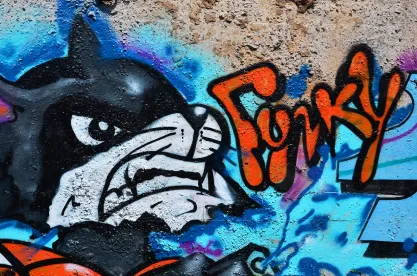In what could be considered an unusual extension of protections given to works of artistic expression, the Second Circuit Court of Appeals has issued an opinion affirming the value of certain street art – also known as graffiti. Castillo v. G&M Realty L.P., No. 18-498-CV, 2020 WL 826392 (2d Cir. Feb. 20, 2020), as amended (Feb. 21, 2020).
There is, or was, an iconic collection of graffiti located in the “5Pointz” area of Queens, New York – 45 works in all. A developer took it upon himself to white-wash this collection in 2013 and the artists took it upon themselves to sue the developer under the Visual Artists Rights Act (VARA). VARA was added to the United States Copyright Laws in 1990. A jury ruled in favor of the artists in 2017.
In early 2018, and on the premise that VARA grants certain moral rights in such works, the underlying Brooklyn Supreme Court awarded the artists a total of almost 7 million dollars in damages based on the maximum amount of statutory damages allowed ($150,000) for each of the 45 works.
The developer appealed which lead to the case being placed in the lap of the Second Circuit Court of Appeals, which affirmed both the liability and the award.
This result may or may not have broad consequences because VARA is intended to prevent the modification (or destruction, the ultimate modification) of visual art in ways that could harm the reputation of certain artists and to works deemed to have recognized stature. In the real world, not all graffiti creators are distinguished aerosol artists – a major consideration in the 5Pointz case.
* * *
It should be noted that the VARA statute contains specific provisions governing artwork incorporated into a building. If the artwork is incorporated “in such a way that removing the work from the building will cause the destruction, distortion, mutilation, or other modification of the work,” then the artist’s rights may be waived if and only if he “consented to the installation of the work in the building… in a written instrument.” This instrument must be “signed by the owner of the building and the author” and must “specif[y] that the installation of the work may subject the work to destruction, distortion, mutilation, or other modification, by reason of its removal.” However, “[i]f the owner of a building wishes to remove a work of visual art which is a part of such building and which can be removed from the building without the destruction, distortion, mutilation, or other modification of the work,” then the artist’s rights prevail unless one of two things has occurred. First, the building’s owner “has made a diligent, good faith attempt without success to notify the author of the owner’s intended action affecting the work of visual art.” Or second, the owner has “provide[d] such notice in writing and the person so notified failed, within 90 days after receiving such notice, either to remove the work or to pay for its removal.” Castillo, 2020 WL 826392, at *4.
* * *
Wisconsin has experienced a surge of development and redevelopment opportunities over the last few years, likely from the booming economy and implementation of opportunity zones. Building walls that might have become canvases for widely recognized works of art could create unanticipated obstacles to redevelopment. Owners and developers need to be cognizant of the fact that paintings and other potential works of art on their buildings might be of “recognized stature” under VARA. Before deciding to revamp, repurpose, or redevelop their properties, developers may need to take steps to ensure that artists have the opportunity to preserve their artwork. Developers, buyers, and sellers need to be aware of these artistic expressions at early stages of development or transactions and might consider making them the subject of closing conditions or indemnification protections, because, as highlighted in the 5Pointz case, removal of such might eventually lead to legal action by the artist.
Property owners also might encourage artists to contribute artwork to their developments, adding artistic contributions and cultural attractions to the community (e.g., murals on building facades). In these instances, owners should consider entering into a written agreement with the artist that outlines the rights of the owner and artist relating to such artwork, and notifies the artist that his or her work might be subjected to destruction or other modification by reason of its removal. Addressing the respective rights of owners and artists from the outset of the project could prevent unintended consequences and unanticipated liabilities relating to the treatment of such artwork.





 />i
/>i
